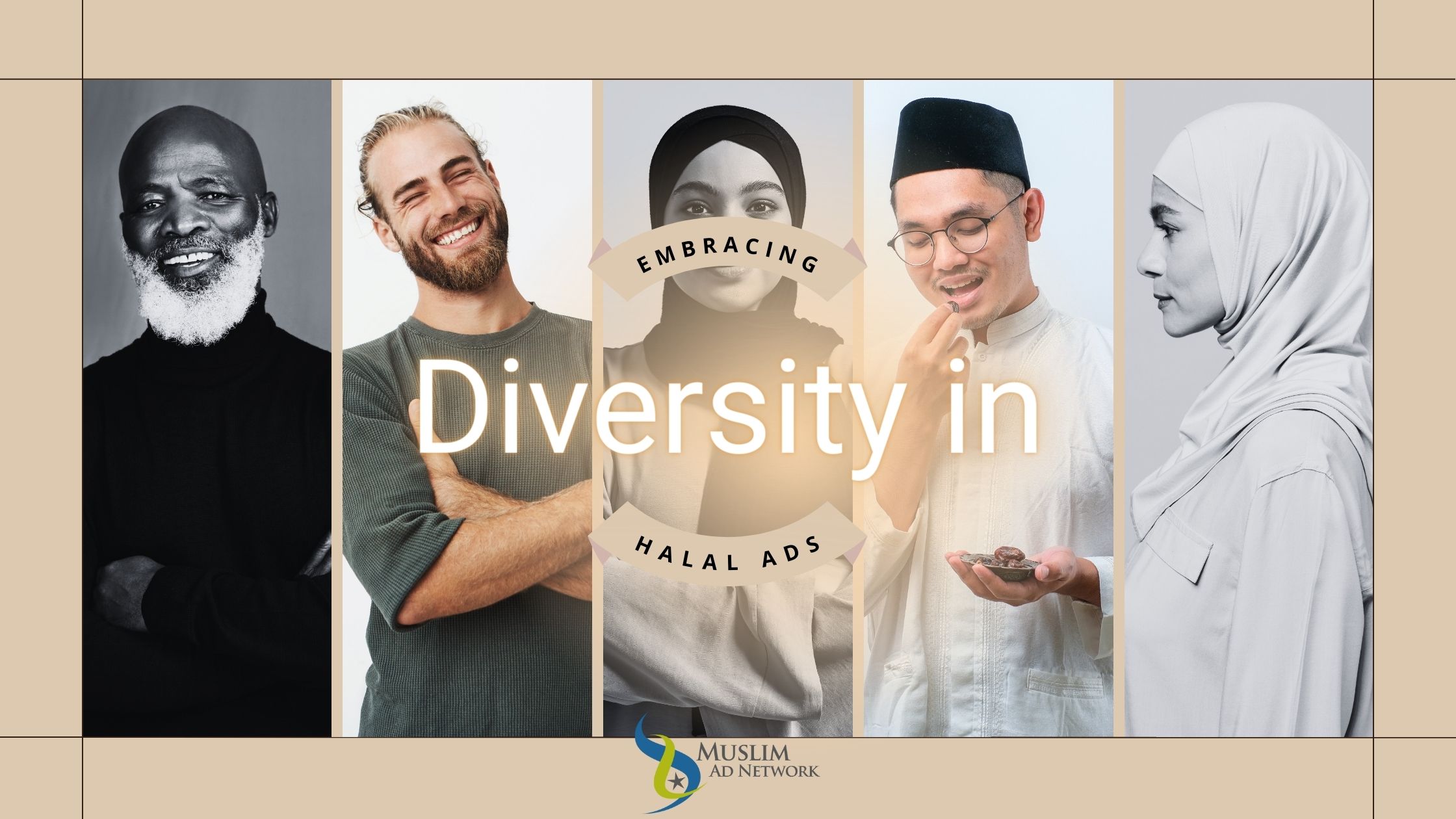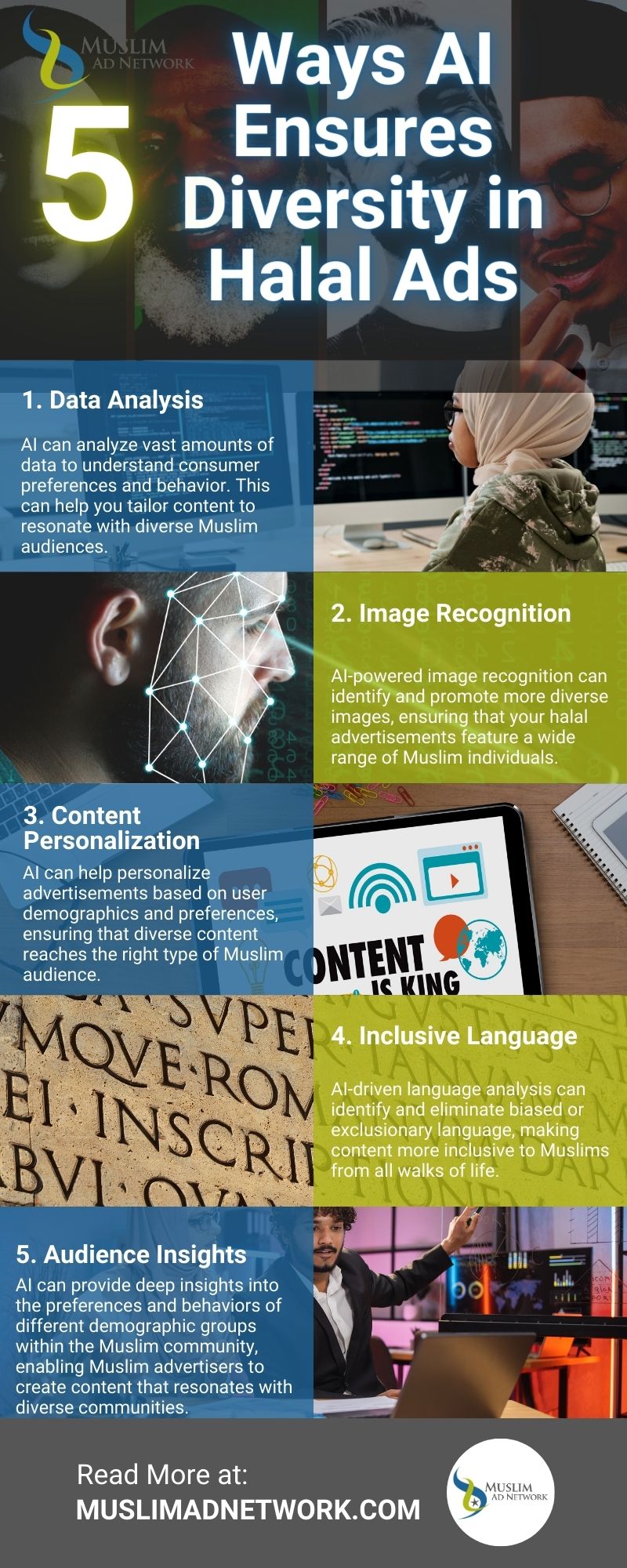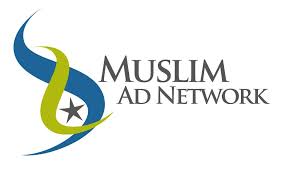
Diversity is no longer just a buzzword in advertising; it’s a fundamental requirement for the world’s largest brands and agencies. The call for diversity and inclusivity in advertising is growing louder, echoing the demands of both consumers and employees. This blog post delves into what diversity means in advertising, provides an example of diversity in action, explores the crucial reasons behind its importance in halal advertisements, and offers strategies to ensure that advertising truly reflects our diverse world, with a focus on the role of AI in achieving these goals.
What Does Diversity Mean in Halal Advertising?
To understand diversity in halal advertising we must first understand diversity in Islam itself.
O mankind, indeed we have created you from male and female and made you peoples and tribes that you may know one another. Indeed, the most noble of you in the sight of Allah is the most righteous of you. Indeed, Allah is knowing and acquainted.
Source: Quran 49:13
This passage explains why humans are diverse and how we all share a common origin. It states that all of us come from one man and one woman, and the different races we see today are like branches of the same initial race that started with these two individuals. The Creator divided humans into nations and tribes to promote cooperation and distinction among them. This division allows different groups to come together as a community and cooperate in worldly matters. The only thing that should set people apart is their moral character. In terms of birth, we’re all the same because we have the same Creator, the same basic building blocks, and we all come from the same original parents.
Diversity in halal advertising involves the inclusion of a wide range of perspectives, backgrounds, and experiences. It means representing various races, ethnicities, genders, abilities, and socioeconomic backgrounds in the content and messages conveyed by halal advertisements. Diversity isn’t just about showcasing differences; it’s about celebrating them and ensuring that everyone can see themselves in the stories and images presented.
Read: Catering to Black Muslim Consumers: What Every Business Ought to Know and Hispanic American Muslim Consumers – What You Need to Know
Example of Diversity in Halal Advertising
One striking example of diversity in advertising of a Muslim product has been Nike. Whether it is advertising its sports hijab collection or swimwear for Muslim women, it always shows models of different ethnicities.

Photograph Courtesy of Nike
Although it took a mainstream giant brand to initiate such inclusivity in its marketing collateral, we are now seeing the same trend being followed by some Muslim-owned brands like Henna and Hijabs.
Why Is Diversity Important in Halal Ads?
Diversity in halal advertising is not just a matter of checking boxes; it has profound implications:
1. Reflecting Reality: Advertising that represents Muslims should mirror the actual Muslim population. A diverse audience of Muslims spread throughout hundreds of ethnicities deserves to see their experiences, cultures, and identities accurately represented.
2. Connecting with Muslim Audiences: Diverse audiences connect more deeply with advertisements that resonate with their lives and values. This leads to greater engagement and customer loyalty.
3. Promoting Inclusivity: Inclusive ads send a message that everyone is welcome. Muslim brands that embrace diversity convey that they value and respect all individuals.
4. Avoiding Stereotyping: Inclusive advertising helps break stereotypes. For example, there are still many who think that Islam is the religion of the Arabs. Showing a diverse spectrum of Muslims from all parts of the world challenges such biases, and promotes positive social change.
The Role of AI in Ensuring Diversity in Halal Advertising
Halal advertising using AI can ensure diversity and high quality in halal advertising.

AI’s role includes:
1. Data Analysis: AI can analyze vast amounts of data to understand consumer preferences and behavior. This can help you tailor content to resonate with diverse Muslim audiences.
2. Image Recognition: AI-powered image recognition can identify and promote more diverse images, ensuring that your halal advertisements feature a wide range of Muslim individuals.
3. Content Personalization: AI can help personalize advertisements based on user demographics and preferences, ensuring that diverse content reaches the right type of Muslim audience.
4. Inclusive Language: AI-driven language analysis can identify and eliminate biased or exclusionary language, making content more inclusive to Muslims from all walks of life.
5. Audience Insights: If executed using the right data, AI can provide deep insights into the preferences and behaviors of different demographic groups within the Muslim community, enabling Muslim advertisers to create content that resonates with diverse communities.
Why Diversity Matters in Muslim Advertising
Now, let’s take a closer look at diversity in the context of Muslim advertising. The Muslim community is one of the most diverse in the world, spanning various ethnicities, languages, and cultural backgrounds. Embracing this diversity is not just a matter of being politically correct; it’s a business imperative.
Muslim consumers have tremendous purchasing power, and they are increasingly discerning in their choices. However, to effectively engage with this audience, advertisers must recognize and respect their diversity. The “one-size-fits-all” approach doesn’t work in Muslim advertising.
AI plays a pivotal role in understanding and catering to this diversity. It can analyze data to identify different segments within the Muslim community, including their preferences, behaviors, and values. This information can guide advertisers in creating content that resonates with various Muslim demographics, from Arab Muslims to South Asian Muslims to converts and more.
Furthermore, AI can assist in crafting messages that speak to the unique needs and aspirations of different Muslim segments. For example, during Ramadan, advertising that focuses on family and community might resonate with one group, while another may be more interested in health and fitness-related products.
The result is not only more effective advertising but also a deeper connection with the Muslim community, which recognizes and appreciates the effort to understand and represent its diversity.
Read: Islam and Ethics of AI Advertising – Part 1 and Islam and Ethics of AI Advertising – Part 2
How Do You Ensure Diversity in Advertising for Muslims?
Ensuring diversity in advertising for Muslims involves several steps:
1. Audience Research: Understand the diverse segments within the Muslim community, including their cultural, linguistic, and regional variations.
2. Inclusive Storytelling: Craft stories that resonate with various Muslim demographics, avoiding stereotypes and embracing the richness of their experiences.
3. Authenticity: Ensure that your advertising genuinely values and represents the diverse voices within the Muslim community.
4. Collaboration: Partner with content creators, influencers, and platforms that can help you reach specific Muslim segments effectively.
5. Personalization: Utilize AI to personalize your advertising content based on the preferences of different Muslim groups.
6. AI-Driven Insights: Leverage AI to gain deep insights into the behavior and preferences of Muslim audiences, helping you tailor your campaigns effectively.
7. Continuous Learning: Stay informed about the diversity within the Muslim community and educate your team about the importance of representing this diversity in halal advertising.
The Importance of Multicultural Marketing for Muslims
In a world where multiculturalism is the norm, neglecting to represent Muslims in advertising is a significant risk. The consequences are not limited to missed business opportunities; they also include the risk of alienating a substantial and influential audience.
Multicultural marketing is not just about the occasional campaign during cultural festivals or holidays. It’s about an ongoing commitment to understanding and respecting the diversity within the Muslim community and reflecting it authentically in your advertising.
As the world becomes increasingly interconnected, and as consumers become more discerning, multicultural marketing for Muslims is no longer optional—it’s a strategic imperative. Embracing diversity in Muslim advertising is not just a matter of good ethics; it’s a sound business decision that can open doors to new opportunities and strengthen connections with a diverse and influential audience.
Conclusion
Diversity and inclusivity in advertising, including halal advertising, are not passing trends but essential requirements for your halal brand. Beyond token gestures, diversity means accurately reflecting reality, connecting with diverse audiences, promoting inclusivity, and dispelling stereotypes.
AI is pivotal in achieving diversity by analyzing data, recognizing images, personalizing content, and eliminating exclusionary language. It helps bridge the gap between advertisers and the diverse Muslim community.
In a multicultural world, omitting Muslims in advertising risks alienating a significant audience. Multicultural marketing for Muslims is no longer a choice but a strategic necessity that opens doors to new opportunities and strengthens connections with this influential audience. Embracing diversity in Muslim advertising is not only ethical but also a prudent business decision in our interconnected, discerning world.
start targeting muslim consumers